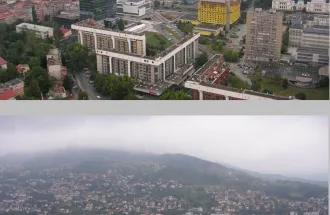The Sustainable Development Goals (SDG), also known as the Global Goals, are a universal call to action to end poverty, protect the planet and ensure that all people enjoy peace and prosperity.
Recently, an increasing number of universities around the world are developing a formal curriculum that focuses on sustainability issues, exactly to the implementation of the 17 UN Sustainable Development Goals (SDGs). However, there is no single model or education program for everyone, but it adapts to needs. Depending on the university mission and vision, the aspect of sustainability that is in focus and the teaching methods may differ.
We can certainly say that the International University of Sarajevo (IUS) is the leading university in BiH in delivering SDGs, because for several years it has systematically applied and support them in many segments of its activities: both in its internal and external university activities and procedures, and in the teaching process.
Member of the academic community of IUS, respected Assist. Prof. Dr. Tarek El-Akkad, from the IUS Architecture program, is one of the bearers of the application of SDGs in the IUS curriculum. In this specific case, it is the SDG goal 11, Sustainable Cities and Communities, and the SDG goal 4, Quality Education. Assist. Prof. Dr. Tarek El-Akkad has been working on sustainable design for many years. Professor El-Akkad says that this concept of sustainability is not new and has been implemented since the 90s as Green Design.
In the class of Bioclimatic Architecture, which has been offered at IUS for many years, and which is currently taught by Dr. El-Akkad, students are focused on the topic of the City of Sarajevo. The students study, record, analyse and propose solutions to improve air quality and reduce pollution in the BiH capital. In Sarajevo, the air is much colder and denser in winter, which is why the pollution remains closer to the ground. Furthermore, the city is full of deciduous trees whose leaves fall in winter, so air filtration becomes a major problem.
During the semester, students study the application of several techniques for controlling the movement of air using bioclimatic devices. Students work in teams and go to assigned locations to understand the built environment; how buildings affect the climate through urban heat parts, absorption and reflection of solar heat, as well as cooling by evaporation. In addition to the focus on sustainable development, within the subject of Bioclimatic Architecture, students are also required to design buildings that are sustainable and respect the natural environment. More detailed studies are even more developed in advanced design studies and graduate projects.
Verde Mesihović, Sueda Beraa and Faruk Deveci, as the most successful students in the subject of Bioclimatic Architecture, presented their projects in pictures with this news.















